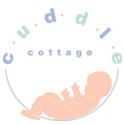
Pudding Pie is a healthy girl. In her four and one-third years of life, she’s fallen ill on very few occasions, compared to most of her peers. We work hard to keep her safe and healthy, and for the most part, we’ve been successful – or lucky. When she does get sick though, I marvel at how her fevers always present themselves somewhere around 3am. There’s a distinct pattern: she goes to bed apparently fine, her sleep becomes restless, she mumbles, moans, and shifts around with increasing frequency, and I begin to wonder if she’s not feeling well. Then (somewhere around 3am), she half wakes/calls out/coughs/throws up, I hurry to her room and find myself embracing a burning hot little body… The thermometer confirms what I already know and we waste no time administering the Tylenol.
I know and appreciate that the fever is her body’s response way of fighting whatever is going on in her body, but my goal is to do whatever I can to cool her down and make her feel better. Between the medicine and getting her to drink a little water, she eventually settles down and falls back asleep, and I stumble back to bed and pray that she’ll sleep comfortably for the rest of night.
I don’t like to give Pudding Pie medicine without a real need for it, but once I’ve established that she has a fever, I don’t hesitate. When she was 15 months old, she awoke feverish and throwing up (somewhere around 3am). I tried to give her Tylenol, but she was fussy. I was hurried and clumsy and she immediately threw up. I was in a quandary; I knew she needed her medicine, but I couldn’t tell how much she’d ejected and how much she’d taken in. I didn’t want to risk overdosing her, so I didn’t give her anymore and instead tried to soothe her back to sleep. As it turned out, she had ejected most of the dose, her fever spiked very quickly, and she had a febrile seizure – an unpleasant experience for any parent.
I’ve since learned that this kind of seizure is harmless and is in fact the body’s healthy response to a drastic change in temperature, but I have no desire to repeat the episode. Now, no matter how fussy and uncomfortable she is, I am very careful when dosing her with fever meds – I dose her slowly so that I know exactly how much she’s taking in. We’ve never had a repeat episode of the seizure, and I am always relieved at how effective the medicine is in bringing down her fever.
Our medicine cabinet stays stocked with fever relief meds for Pudding Pie and the adult members of the home. These days, Children's Tylenol is on store shelves in limited quantities and the makers of Tylenol (McNeil Consumer Healthcare), wish to spread the word that there will be updates to both Infants' and Children's Tylenol products, including packaging enhancements and a change to the concentration of the Infants' product. These changes will be implemented as early as this upcoming cold and flu season.
Ed Kuffner, MD, father of three, and Vice President, Medical Affairs at McNeil explains the new product improvements:
“As a dad and a doctor, I know firsthand how tough it can be when your baby or child gets sick. While we are trying to comfort our children, we are also making sure that they are getting the care and medicine that they need to feel better. For me, like every parent, safety comes first. For this reason, as early as this upcoming cold and flu season, we will be making safety and convenience enhancements to both Infants’ and Children’s TYLENOL® products, including a change to the concentration of our Infants’ TYLENOL® products.”
The new safety and convenience enhancements of both the Infants’ and Children’s Tylenol include the following:
Infants’ Tylenol will be available with a new bottle that has a protective opening and a new push-in-syringe which will:
• Further reduce the risk of children being able to get to the medicine in the bottle
• Provide better dosing accuracy and ease of administration to your child
• Allow for better control when dispensing the medication and reduce spillage
The bottles of Children’s Tylenol are now enhanced with a protective opening that will help make it more difficult for a child to get to the medicine in the bottle.
Important changes to the concentration of Infants’ Tylenol include the fact that there will now be one concentration of acetaminophen for single-ingredient Tylenol products for infants and children. This change is being made to standardize dosing across Tylenol products and age groups. Infants’ and Children’s Tylenol products will continue to include specially designed dosing devices appropriate to the age of the child.
There will be a time period when both the current and new concentrations of Infants’ acetaminophen products will be available in stores and parents and caregivers might have both in their medicine cabinets. Be sure to read and follow the dosing directions on the product that is being used. Caregivers should contact their child’s healthcare provider if they have questions about dosing instructions.
The makers of Tylenol also provided some very helpful tips on giving medicine to infants and children:
Remember to NURSE:
Never give adult medicines to children.
Use the measuring device (syringe, dropper, dosage cup) that comes with the medicine every time you use it. Don’t use kitchen spoons (teaspoons or tablespoons).
Read and follow instructions on the label. Never give more than the recommended dose and do not give the medication more frequently than recommended.
Store all medicines out of the reach of children. Immediately following use, always restore the child resistant cap and put the medicine back into a high and out of sight location.
Every child grows. Know the infant’s or child’s weight and/or age to help determine the appropriate dosage.
Visit Tylenol to learn more about the products and their changes.
I wrote this review while participating in a blog tour by Mom Central Consulting on behalf of Tylenol and received a promotional item to thank me for taking the time to participate.




